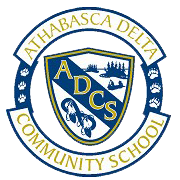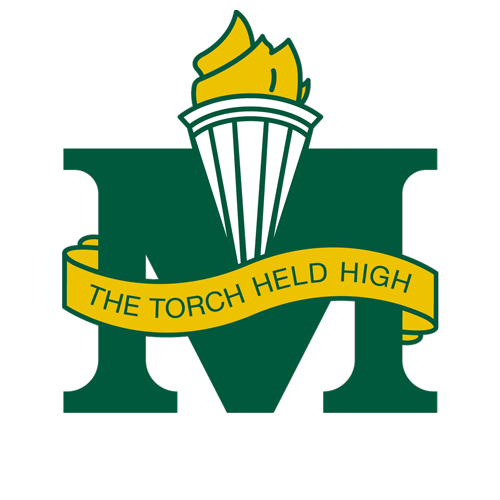AP 244: Service Dogs
Instruction & Assessment
Background
The Superintendent ensures that reasonable supports are provided for students with a disability who are dependent upon a Service Dog, balanced appropriately with:
- The duty to accommodate, acting reasonably, in response to undue hardship;
- The duty to provide a safe learning environment for all employees, students and volunteers; and
- The duty to consider competing interests as part of the accommodation process.
The objective of this Procedure is to ensure that a process for the implementation of a Service Dog in any school, where applicable, is based on clear communication, a well-informed school community and careful planning as part of the accommodation process. Use of a Service Dog by an Applicant may be permitted on Division property when deemed appropriate and reasonable as identified and outlined in this Procedure.
Situations may arise, however, in which the duty to accommodate an Applicant through the use of a Service Dog conflicts with another individual’s safety and well-being such as for example in instances of allergy and anaphylaxis.
Definitions
a) Accommodation: shall refer to a means, through reasonable efforts, such as the prevention or removal of barriers that impede Applicants with disabilities, from participating reasonably in the educational services provided by the Division.
b) Accommodation Council: shall refer to a temporary staff-only council, appointed on a case-by-case basis by the Superintendent or designate and convened for the purpose of determining a student’s need for accommodation as reasonable to do so on the basis of the student's disability.
c) Applicant: shall refer to a student or staff member with a disability or in the case of a student with a disability, a parent who satisfies a burden of proof that a Service Dog is warranted, within a school or Division site as required by law and this Procedure and where applicable, as identified in relevant legislation.
d) Emotional Support Animal (Dog): shall refer to an animal that provides emotional support to ease one or more identified symptoms of a person’s disability. Emotional support animals are also referred to as “comfort animals.” For the purpose of this Administrative Procedure, Emotional Support Dogs may only be considered in extreme circumstances. These animals are not trained to perform work or tasks.
e) Handler: shall refer to the individual who directs the use and attention of the Service Dog. In instances where the Service Dog accommodates a specific student, the Handler shall either be the student requiring accommodation, or may be, depending on the circumstances as decided by the Superintendent or designate in consultation with the Principal, an Educational Assistant assigned to work with the Student, if appropriate after careful, thoughtful review and consideration.
f) Service Dog: shall refer to a dog that is individually and specifically trained to do work or perform tasks for the benefit of the Applicant. The Service Dog’s performance of such work or tasks must be directly related to the Applicant’s disability. The Service Dog’s training shall be aligned to specific work or tasks in support of the Applicant.
A dog that is merely a “pet” or “support animal” shall not be considered as a Service Dog.
Service dogs must be registered in Canada. The Government of Alberta developed provincial standards and a qualified list of animal training schools to support the safety and inclusion of Albertans who rely on Service Dogs. [See Alberta Training Standard of Organizations to be Eligible for the Qualification List pursuant to the Service Dogs Qualification Regulation A/R 59/2017 as amended from time to time.]
g) Student: shall refer to the specific student with a disability requiring a Service Dog accommodation for the purpose of this Procedure.
h) Therapy Animal: Therapy animals (typically dogs) are specifically trained for Animal Assisted Therapy (AAT). A trained handler or team of handlers are able to deploy therapy animals as a component of a specialized health service that would be considered beyond the scope of the Division.
Procedures
1. The use and access of Service Dogs are protected under the Alberta Service Dogs Act.
2. Upon written request submitted by the Applicant at least 20 school days prior to the date on which the Applicant requests the Service Dog to enter the Division property, the Superintendent or designate shall review the request, including meeting with the Applicant, to ensure the proper, thoughtful and timely determination of the accommodation request for use of a Service Dog within the school.
3. The Principal or designate shall facilitate an initial consultation with the Applicant to determine whether the Applicant has a disability which requires additional accommodations.
3.1. As part of this process, the Applicant shall provide medical documentation to support the disability (unless readily apparent) to the Superintendent or designate.
3.2. Once the appropriate medical documentation is provided to the Superintendent or designate shall assess the potential reasonable accommodation for the Applicant.
It is the intent of this Procedure that the lines of communication be open between the Applicant and the Division given their legal duties to cooperate in the accommodation process.
4. On a very exceptional basis, and accompanied by accredited medical evidence, elements of this Administrative Procedure may apply for certified Emotional Support Dogs only. Emotional Support Animals that are not Emotional Support Dogs shall not be considered eligible for placement in a school.
4.1. The Superintendent or designate may consider medical evidence in the form of a physician’s clearly defined letter of support for the short-term enablement of an emotional support dog; notably,
4.1.1. The medical permission for an Emotional Support Dog must include a reasonable, short-term duration;
4.2. Notwithstanding certification requirements, any and all procedures and restrictions in place for Service Dogs (i.e. handling, leashing) are applied to Emotional Support Dogs.
Specifics
5. The Principal or designate shall inform the Applicant of this Procedure. The Superintendent or designate may also clarify the process for generating an appropriate accommodation plan.
6. The Applicant or, in the case of a student, the parent or guardian, shall be required to advise, in writing to the Principal or designate, of the disability and request in writing that the school provide permission to utilize a Service Dog in school or on school division property. This request shall include the following:
6.1. Schedule 244.A - Certified Service Dog Request shall be completed by the Applicant and submitted for approval to the Principal;
6.2. The Applicant shall provide a medical certificate from a certified physician that establishes the disability and the necessity of a Service Dog within the school, specific to the nature of the Applicant’s need for accommodation. (This may be in two separate medical notes.)
7. The Superintendent or designate shall verify whether there is a disability (but not inquire into the nature of the disability).
8. The Principal or designate shall verify the existence of government issued identification for the Service Dog as per the Alberta Service Dogs Qualification Regulations to ensure that the Applicant and the Service Dog are qualified for the purposes of the Service Dogs Act and have the right to access public places:
8.1. Valid identification cards shall include an Alberta government logo and a picture of the individual and service dog.
9. The Principal or designate shall inform the Superintendent or designate that an Applicant is requesting accommodation through the use of a Service Dog.
10. The Superintendent or designate, in consultation with the Principal, shall convene an Accommodation Council to review and approve the application and generate an accompanying accommodation plan (the Plan) (if required) for successful accommodation through the use of the Service Dog:
10.1. The Plan shall identify whether the Applicant is capable of handling the Service Dog and, in the absence of ability to handle the Service Dog, the Plan shall identify measures to support the accommodation, where applicable;
10.2. The Plan shall define measures, as prudent to do so, to ensure that the Handler and/or Student and Service Dog are accommodated appropriately within the school or site, bearing in mind the Division's requirement to ensure the safety of all its students and staff;
10.3. The Accommodation Council shall ensure that the Plan attends to how the Applicant proposes to attend to the well-being of the Service Dog including its care, handling and education for others at school (guided by the information provided by the Applicant at Article 11 of this Procedure); and
10.4. The Accommodation Council shall support the Principal in determining appropriate Plan including the facilitation of the Service Dog with respect to:
10.4.1. Food and water needs including provision of a water bowl and procedures for cleaning;
10.4.2. Bladder/bowel needs including frequency, location and clean-up;
10.4.3. Playground access;
10.4.4. Assemblies and/or concerts; and
10.4.5. Recess activities, or alternate activities.
11. The Superintendent or designate shall meet with the Applicant and Handler and/or the Applicant to review all relevant information within the Plan and establish an effective initiation date for the accommodation once the Applicant has received a proposed Plan and the parties have discussed the same.
11.1. For further clarity it is incumbent on the Applicant to cooperate with the Division in the application of this Procedure (as part of the Applicant's duty to cooperate in the accommodation process).
12. The Superintendent or designate shall consult with the Principal to appropriately inform those individuals who may be impacted by the introduction of the Service Dog into their respective school and/or classroom (see Attached Templates).
With respect to Applicant/Student responsibilities and Removal of Service Dog
13. The Applicant/Student is ultimately responsible for the Service Dog; this responsibility includes the following:
13.1. Transporting or walking the Service Dog to and from school, or facilitating the appropriate use of bus transportation;
13.2. Providing the required information and equipment for the care of the Service Dog, including how the Applicant proposed to attend to the well-being of the Service Dog including its care, handling and education for others at school;
13.3. Assuming full financial responsibility for the Service Dog’s training, veterinary care, and other related costs;
13.4. Working cooperatively with the school staff to ensure the accommodation is a success;
13.5. Assisting the Principal or designate in communicating relevant information to the school community;
13.6. Providing the Principal with all the required information or documentation in a timely fashion;
13.7. Providing annual proof of the following vaccinations for the Service Dog DHLPPC (Distemper, Hepatitis, Leptospirosis, Parainfluenza, Parvovirus, Coronavirus, Bordetella and Rabies);
13.8. Treating for and keeping free from fleas and ticks;
13.9. Housebreaking the Service Dog;
13.10. Cleaning and grooming to reduce shedding and dander;
13.11. Any liability for any harm or injury caused by the animal to other students, staff, visitors, and/or property and must provide proof of current liability insurance coverage as required by the Division;
13.12. Using a harness, leash or other tether, unless either the Handler is unable to because of the disability to use a tether, or the use of the tether would interfere with the Service Dog’s safe, effective performance of work or tasks, in which case the Service Dog must be otherwise under the Handler’s control;
13.12.1. Emotional Support Dogs shall be leashed or tethered at all times.
13.13. Caring for and supervising the Service Dog including walking the Service Dog or responding to the Service Dog's need to relieve itself.
13.13.1. If a student with a Service Dog is unable to care for or supervise the Service Dog, the parent is responsible for providing care and supervision of the Service Dog unless otherwise provided for in this Procedure and/or the Plan.
13.13.2. The Superintendent or designate may decide that it is reasonable for a school official to assist or monitor a student when using his or her Service Dog at school, such as by assisting the student in tethering and untethering the Service Dog, by giving commands to the Service Dog, or by escorting the Service Dog on school property.
13.14. For clarity, the Superintendent reserves the right to provide, or designate provision of, approvals in relation to the above points 13.1 to 13.13.2.
14. A Service Dog may be required to be removed from a school facility or school under any of the following circumstances:
14.1. The Service Dog is out of control and the animal’s Handler does not take effective action to control it, provided reasonable accommodations have been made by the Division (if necessary);
14.2. The Service Dog is not housebroken;
14.3. The Service Dog’s presence would fundamentally alter the nature of the service, program, or activity; and/or
14.4. The Service Dog provides a direct threat to the health or safety of others that cannot be terminated by reasonable modifications.
With respect to educational guidelines for students who shall be in the presence of a Service Dog:
15. The Principal or designate, with the support of the Applicant and Accommodation Council shall provide information sessions at the school, as prudent to do so, to facilitate the introduction of the Service Dog into the school under the guidance of the Principal.
16. Service Dogs are trained to focus on their Handler and on the task at hand but are not infallible to distraction. The Principal shall ensure that staff and students are taught to refrain from:
16.1. Calling to the Service Dog;
16.2. Making distracting sounds directed at the Service Dog;
16.3. Petting the Service Dog without direct permission;
16.4. Offering the Service Dog food without permission;
16.5. Photographing or recording a Service Dog without permission.
With respect to Competing Rights (as an example anaphylaxis/allergies, etc.):
17. Whereas students are entitled to welcoming, caring, respectful and safe learning environments and the Division has a legal duty to provide for the safety of its staff and students, the Superintendent respects the rights of those individuals requiring accommodation through the use of a Service Dogs as well as the right of students to their safety (as an example, the safety of students who are anaphylactic to Service Dogs).
18. In instances where conflicting rights (for example allergies/anaphylaxis and the presence of a Service Dog), the Superintendent or designate may request, in writing, medical documentation, from all parties conflicted in order to appropriately verify the extent of the concern and respond accordingly:
18.1. The Superintendent or designate may request medical documentation or related documentation which indicates the extent of separation required and whether or not the anaphylactic individual is able to be in the same area, classroom or school.
18.2. Conflicting rights do not exist with respect to an Emotional Support Dog; in these instances, the rights of individuals with allergies/anaphylaxis are superior to those for an emotional support animal.
19. The Superintendent or designate may determine, in accordance with the Education Act, that an alternate placement is reasonable under the circumstances for accommodation purposes:
19.1. In those instances, where appropriate medical documentation from conflicted parties demonstrate: such as for example (but not limited to):
19.1.1. Sufficient evidence toward the necessity or not of the Service Dog; and
19.1.2. An inherent danger (if applicable) to the anaphylactic Applicant within a school.
20. The determination for an alternate placement for either the Applicant or any other person at the school shall be based on a variety of factors, including but not limited to:
20.1. The severity and extent of information provided for in relevant medical documentation;
20.2. The ability to accommodate, including any transportation-related issues; and
20.3. The quantity of individuals impacted by the conflict.
21. If a request for a Service Dog to accompany an Applicant with a disability in the school facility is denied, that decision may be appealed as per Administrative Procedure 170 - Appeals Concerning Student Matters. Additionally, student placement decisions made to accommodate student needs based on this Procedure may be appealed to the Board as per Administrative Procedure 170 – Appeals Concerning Student Matters.
22. Teacher transfers that may result from the application of this procedure proceed in accordance with the Education Act and all applicable Division policy and procedure.























